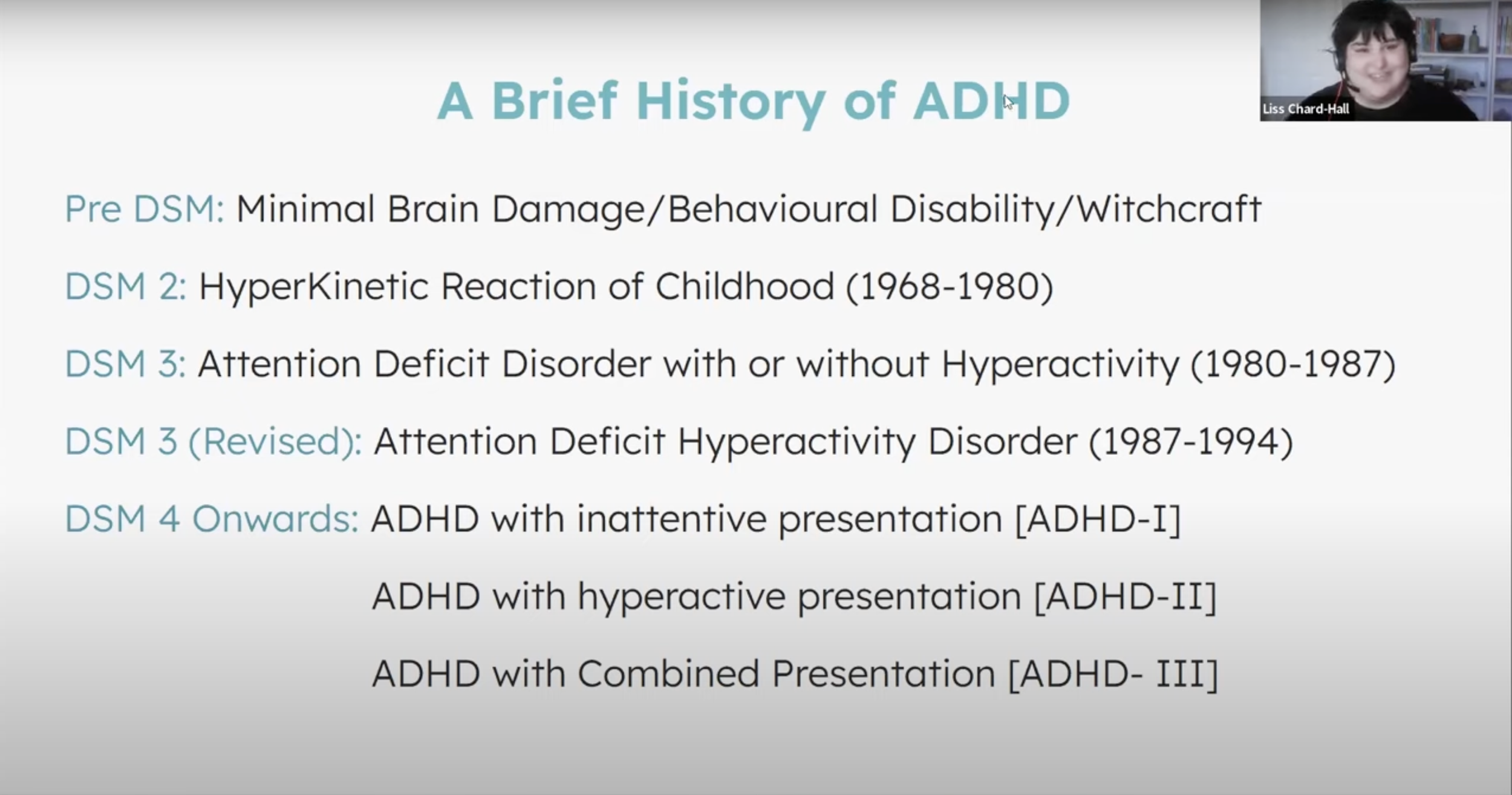Exploring neurodiversity and lived experience, our latest webinar delves into what it means to demedicalize neurodiversity, with a spotlight on ADHD. Our UK Education Manager, Joe Dawber, welcomed our wonderful guest speaker Liss Chard-Hall, an AuDHD Study Skills Tutor for students in receipt of the Disabled Students’ Allowance, as well as a speaker and consultant for neurodiversity in higher education.
Liss is passionate about helping people to understand the challenges that students with ADHD face and in this webinar she discusses some misconceptions around ADHD, and how to better support students.
Here’s what we learnt…
The history of ADHD
Language is essential when we talk about neurodiversity, it shapes our connotations and perceptions. Before the introduction of the Diagnostic and Statistical Manual, ADHD was referred to as ‘minimal brain damage’ and even ‘witchcraft’. ADHD was also originally thought to only affect children, and it was only diagnosed in adults from the 1980s. Since then, our understanding of ADHD has evolved.
What is ADHD?
For Liss, having ADHD feels like living life with everything playing at the same volume. She explains that the hyperactivity element of ADHD is often misunderstood, and it can present in ways that we wouldn’t expect. Rather than just associating hyperactivity with physical manifestations, Liss explains that particularly for women, girls and non-binary people, this hyperactivity is internal and manifests in the mind. This is a huge reason why this demographic often goes underdiagnosed, or is diagnosed much later in life.
The inattentive element of ADHD in lived experience does not mean a lack of attention, but often not knowing where to focus attention. The features of ADHD that Liss is affected by most are executive dysfunction, lower levels of dopamine and rejection sensitive dysphoria.
Liss says, “ADHD described is not ADHD as lived experience”.
There are multiple traits of ADHD that aren’t necessarily listed in diagnostic criteria - there is a dissonance between what people think ADHD is and what it actually is.
What can educators do to better support students with ADHD?
Show that you’re on their side and that you understand where they are coming from. For example, rejection sensitive dysphoria affects ADHD students to the extent that they worry about disappointing the people they’re getting support from
Acknowledge that certain things won’t change and support them with managing their traits in healthy and useful ways, so that coping techniques can reduce stress
Believing students when they talk about their challenges, learn from ADHDers themselves rather than outdated psychiatrists
How Present Pal supports students with ADHD
Present Pal supports students with ADHD and learning differences when it comes to communication tasks. The main challenges that students with ADHD face when it comes to presentations and public speaking are:
Working memory
Attention and focus
Task initiation paralysis
Time keeping
Impulsivity
Present Pal’s features are created specifically to support students with these challenges:
Checkpoints help to minimize distractions and guide students through their presentation
Lessons and the Presentation Planner give users a place to start to help to overcome task initiation paralysis and anxiety
Integrations with PowerPoint and Google Slides helps to reduce the cognitive load of presentations, giving students more control over their presentation and one less thing to worry about
Watch this space for our next ADHD webinar in September with Liss, ‘The reality of ADHD late diagnosis’. Check out our events and webinars page to find out more.




